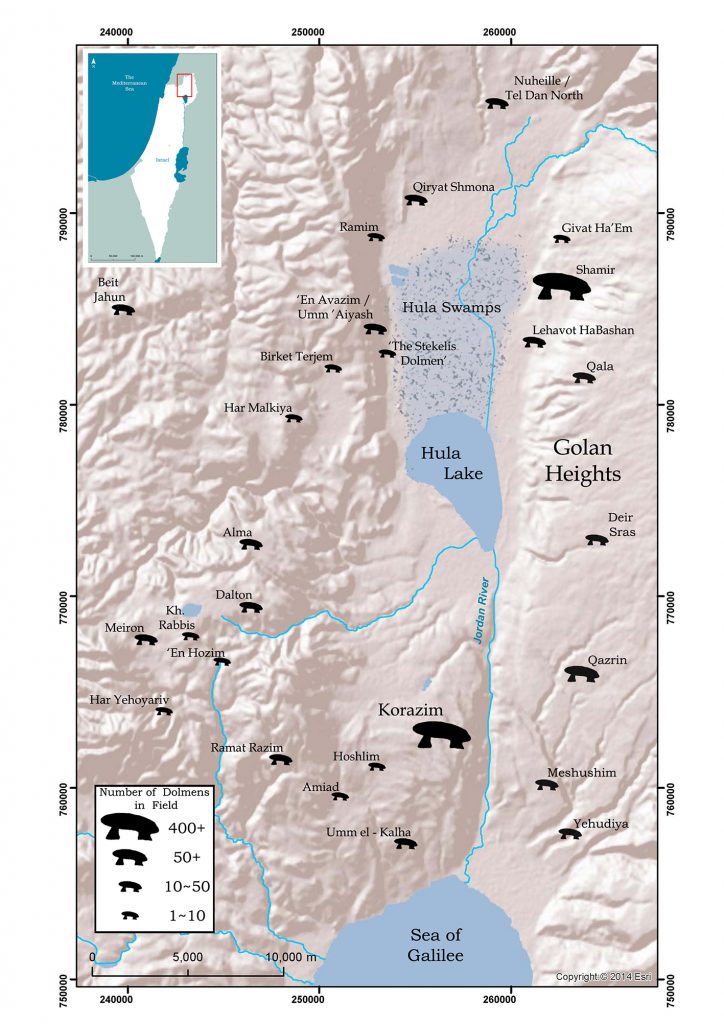
Dolmens, megalithic burial structures, were reported from the Hula Valley (Northern Dead Sea Rift) as early as the 1880s. Yet, they are still one of the less understood archaeological features in the Levant. Their date and method of construction, architectural typology, and even their function are debated. The first overview of the Hula Valley dolmens was published in the Journal of the Israel Prehistoric Society by M. Stekelis, nearly 60 years ago. In the paper below we gather the data available on the dolmens of the region, resulting from many years of survey and excavations of numerus researchers, including unpublished observations, to provide an overview of the current knowledge of the Hula Valley dolmens. Our surveys resulted in the documentation of unreported dolmens all around the Hula Valley, in new reevaluating the number and density of the Ramim Ridge dolmens and in relocating dolmens that were reported in the past and “lost” since by research. The data indicates that some of the common conceptions regarding dolmens presence or absence, construction method, type of rocks used and geographical distribution should be revised.
The primary observation resulting from this overview is that the Hula Valley can be seen as a megalithic landscape in which dolmens surround the valley from all directions. The Shamir Dolmen Field appears to be the focal point due to its high density of dolmens and their size and nature. Among the questions for future exploration is whether the other dolmens surrounding the Hula Valley have a functional and/or cultural affinity to the central Shamir Dolmen Field, indicating a complex megalithic landscape for this unique region.

Shamir Dolmen 3
DSC_0255
DSC_0257
DSC_0263
Shamir Dolmen 3
DSC_0321
DSC_0325
DSC_0326
Board game on Dolmen cup-stone
DSC_5271
Shamir Dolmen 5
Shamir Dolmen Hermon View
IMG_1802
Dolmen 3
cof
Shamir Dolmen 3
cof
Pistachio tree growing from dolmen
Shamir Dolmen Field
beads Shamir Dolmen 3
Copper dagger_DeirSaras_Hf_05
Berger_DeirSaras_Hf_06
Kiryat Shamona Face
DSC_0317
DSC_1180
DSC_8559
Meshushim dolmen rock art